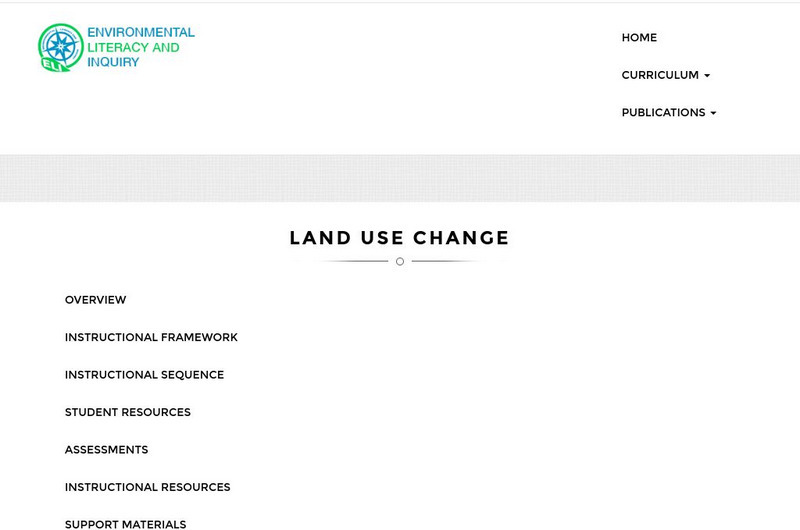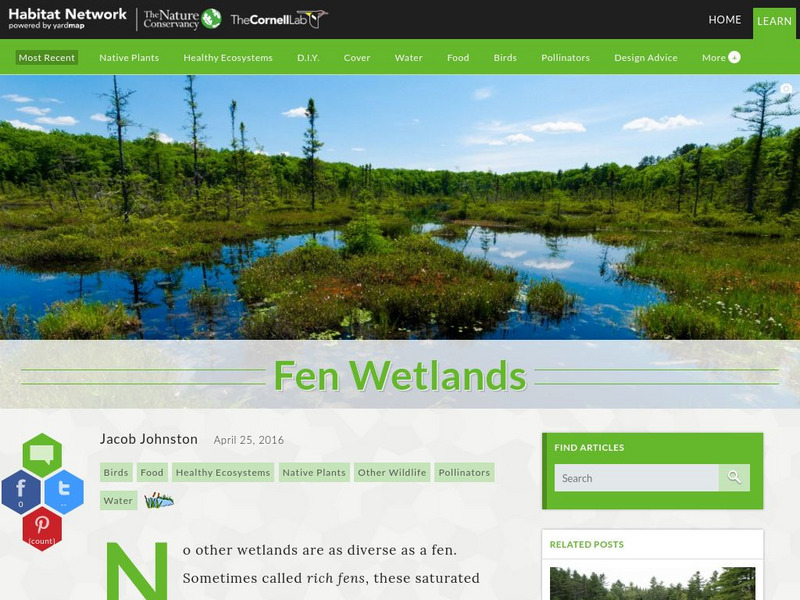Curated OER
How Big is a Crowd?
Sixth graders compare the relative sizes of the five Great Lakes and their human populations. They describe some of the problems that arise when many people depend on a limited resoure. Students discuss how the Great Lakes and the...
Curated OER
Internal vs. External Fertilization
Students distinguish between internal and external fertilization. In this biology lesson, students classify organisms according to their reproductive method. They simulate the role of parents who reproduce either internally or...
Curated OER
Number Theory
Learners explore the concept of number theory. They discuss an assortment of number theory topics such as prime numbers, composite numbers, GCF, modular arithmetic, and others in a lecture style discussion. Pupils view videos about these...
Teach Engineering
Force on a Current Carrying Wire
What do electrical currents have to do with an MRI? Using a simple wire setup and a magnet, class members explore forces used in an MRI by investigating the magnetic force acting on a wire carrying a current.
Curated OER
Race To Win Project
Students develop proper work and personal skills that will enable them to become competent and confident adults. Students analyze basic nutritional habits. Students evaluate sport/athletic food patterns.
Teach Engineering
Battle of the Beams
Make the strongest beam possible using taffy? Groups mold a taffy-water mixture into a beam and a reinforcing material of their choice. To finish the final installment of a two-part series, participants test its strength by adding...
Curated OER
Building Bridges
Students identify the different types of bridges. Using the internet, they research information on how they are built by completing a scavenger hunt. Locating a specific area, they determine which type of bridge would be appropriate and...
Curated OER
Plants of the Past
Fourth graders explore ecosystems by examining plants of the past. They discuss ways in which we interact with plants in our daily lives. Students discuss the role plants play in providing food for animals and the significance they had...
Curated OER
Torque Me Off
Learners investigate the lever and the mathematics associated with levers. They determine the conditions necessary to balance a system of forces around a fulcrum.
Curated OER
Introduction to Measuring the Forest
Students investigate how much wood is in a forest. In this forestry lesson, students calculate how much usable wood comes from the forest. They will read, Sizing Things Up from Trees + Me = Forestry, measure firewood piles, and create a...
Curated OER
Geography
Students work together in groups to research the cultural groups of West Africa, Sudan and the Guinea Coast. They compare and contrast each culture and locate the political and cultural boundaries on a map.
Curated OER
Breaking News English: New Machine Sucks CO2 from the Air
In this English worksheet, students read "New Machine Sucks CO2 from the Air," and then respond to 1 essay, 47 fill in the blank, 7 short answer, 20 matching, and 8 true or false questions about the selection.
Curated OER
The Breathtaking Nature of the Urban Explosion, Part 4
Learners explore the respiratory system. They use a computer to monitor the respiratory rate of an individual. They determine residual oxygen levels in exhaled air. Students evaluate how internal 02 and C02 concentrations influence...
Curated OER
Bioremediation
Pupils design and conduct investigations that illustrate the effect bioremediation has on organic matter and determine environmental applications. They, in groups, present their findings to the class.
Science Buddies
Science Buddies: Career Profile: Biologist
Explore the career options of a biologist in this Science Buddies Career profile. You can work in a lab, work outdoors, conduct all kinds of research about living organisms and their relationship to their environments. Find out the...
Concord Consortium
Concord Consortium: Stem Resources: Changes in the Environment
An activity to help students understand that as the environment changes, plants and animals must evolve to stay alive. Students watch as a mystery plants grow in a changing environment to see if they will evolve or go extinct.
Georgia Department of Education
Ga Virtual Learning: Ap Environmental Science: Introduction
An introductory module with interactive activities, class notes, lab activities, and review questions which cover advanced placement environmental science concepts.
University of Missouri
Microbes in Action: Classroom Activities: Something's Glowing in My Petri Dish
Using microbiology techniques, students will explore the effect of iron on the fluorescence of several species of bacteria. Studying bacteria in an iron scarce environment allows students to see the fluorescence released. Lesson plan...
Other
The Academy of Natural Sciences
This site describes the museum. It shows the viewer what is currently on exhibit, interesting facts, and many links to other exhibits.
Other
Alliance to Save Energy: Educator Lesson Plans
A series of teacher lesson plans for various grade levels. Topics pertain to insulation (among other things) and other energy conservation and energy efficiency topics. Can be easily adapted for a student project or lab investigation.
The Environmental Literacy Council
Environmental Literacy Council: Teacher Resources
Environmental Literacy Council offers teacher resources for a variety discrete subjects and grade levels in this website. Teachers looking for classroom activities, labs, and quizzes about environmental science that are reviewed by...
Other
Lehigh University: Land Use Change
An inquiry-based science unit for middle school students centered on how human activities affect environmental changes related to land use. The lessons integrate technology and lab activities while teaching about today's land use and how...
PBS
Pbs Kids Zoom: Chemistry Activities
Cool science site provides plenty of fun and engaging chemistry activities for young scientists to learn something new and have some fun at the same time.
Cornell Lab of Ornithology
Habitat Network: Fen Wetlands
Sometimes called rich fens, find out about these saturated environments that are fed with mineral-rich groundwater and occur at low points or slopes in the landscape where the soil surface is intercepted by the water table.






















